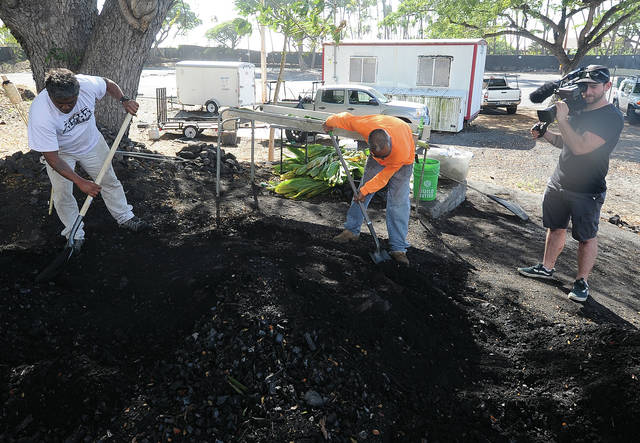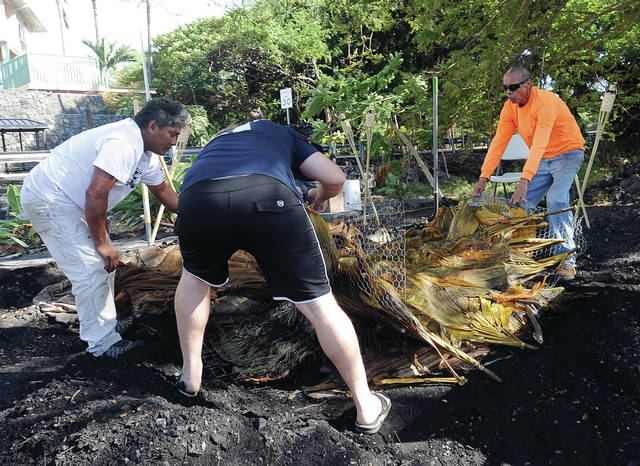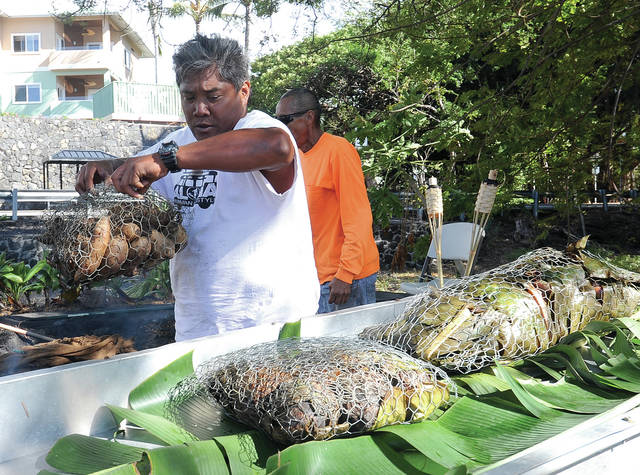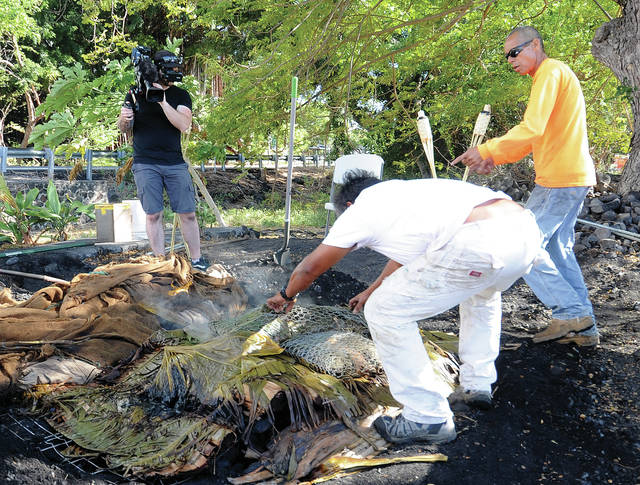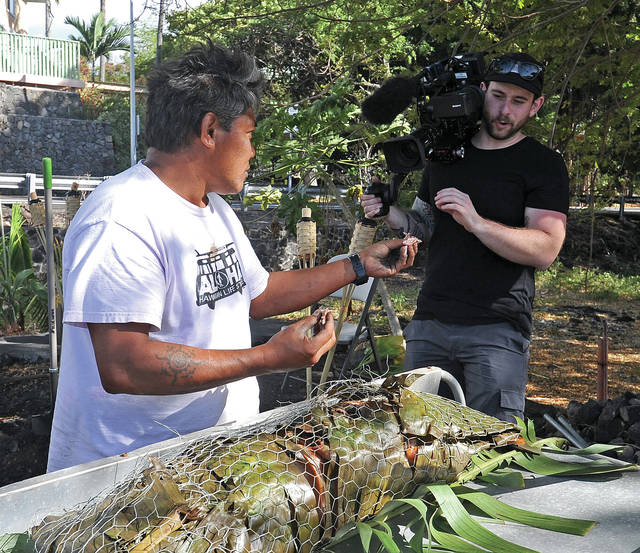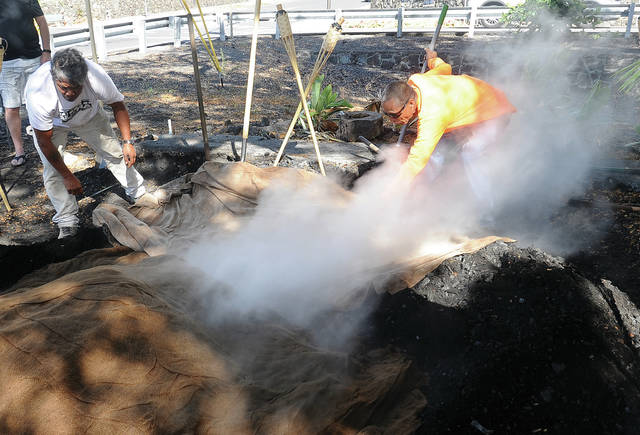KAILUA-KONA — Justin P. Asing and George Roldan were up before the sun Monday digging a hole in a little patch of dirt across from Kahaluu Beach Park.
Working by the light of tiki torches a few steps off Alii Drive, the two men — who boast a combined 57 generations of family connected to Hawaii — engaged in a practice roughly as old as their culture itself.
Crackling kiawe wood heated porous lava stones upon which the men laid around 30 pounds of pig and a couple bundles of taro and sweet potato. They covered it all with ti leaf and burlap, buried it and let the imu, an earthen oven, do its work.
Asing described cooking with an imu as less a science than an art, perfected over time and handed down one generation to the next to “honor the past practice of our kupuna.”
Once a common occurrence, Roldan said, the tradition of using the imu has evolved into one centered more on celebrations — birthdays and weddings and holidays.
Monday’s feast served a different purpose, however. It was part of a tutorial on Hawaiian cuisine and culture requested by filmmakers of an upcoming Netflix restaurant/travel docuseries. They received their tutelage from one of Hawaii Island’s homegrown chefs, Philip “Ippy” Aiona.
Aiona, who’s amassed some national recognition as a finalist on Food Network Star and as part of a 30 under 30 Forbes Magazine feature on the food industry, has a vision of spreading Hawaiian cuisine across the mainland.
That will come in earnest with the expansion of Ippy’s Hawaiian BBQ, with one location now in the Queens’ MarketPlace at Waikoloa Village and another scheduled to open in Waimea around the end of March.
But Aiona started spreading aloha fare on a smaller scale Monday when he held a luau for producers and participants in the upcoming Netflix show, which is currently scheduled for an end-of-the-year release and carries the working title “Restaurants On The Edge.”
“I believe the actual show is they go to a restaurant in a real beautiful location … a restaurant that needs help,” Aiona explained. “And they have a chef and a restaurateur and they kind of help them out. So what they do is, they had me teach them about food and the culture and stuff like that, then they’re going to take that info and go and help the restaurant.”
Explaining Hawaiian fare to those unfamiliar with it isn’t the simplest task, Aiona continued. He broke it down into two categories — Hawaiian cuisine and plate lunch.
The former can be highlighted by dishes like lomi salmon, squid luau and chicken long rice. The latter was born out of the cultural melting pot created when plantation owners imported labor from countries like Japan, China and the Philippines.
Plantation owners often segmented the workforce in an effort to keep employment subdued, the logic being it’s difficult for people who speak different languages to organize efforts for better pay and improved working conditions.
The culinary result of the plantation era produced varied mixtures of international cuisines, which evolved into the modern day concept of plate lunch. The linguistic result was the birth of Hawaiian Pidgin.
Aiona recently sold his Three Fat Pigs restaurant at the Waikoloa Kings’ Shops to focus exclusively on his plate lunch passion, which grew out of time spent in the Kamuela Deli where his father specialized in plate lunches for years.
Dishes like yakitori chicken, Korean fried chicken and musubi tell the history of Hawaiian cuisine, and in many ways, the history of the island and its inhabitants themselves.
That history and its relevance were evident in the care and pride Asing and Roldan took during the 10 hours they spent over the imu Monday.
It is evident in the direction Aiona is steering his career.
And he’s hoping it’s evident in the coming Netflix docuseries for which he served as a consultant — history and culture of Hawaiian cuisine perhaps the key ingredients in revitalizing one of the island’s “restaurants on the edge.”







